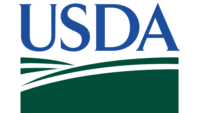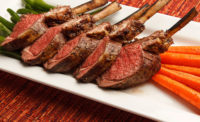The U.S. Department of Agriculture (USDA) defines veal as the “meat from a calf or young beef animal. A veal calf is raised until about 16 to 18 weeks of age, weighing up to 450 pounds.”
Veal calves are the male Holsteins born on dairy farms, thus the bulk of veal production occurs in states with a larger dairy cow population. USDA separates veal into two categories; “bob veal” which is marketed up to three weeks of age and “milk-fed veal” which makes up the larger percentage of veal production on farms.
Today, the American Veal Association (AVA) estimates that 350,000 veal calves are raised on approximately 1,000 family farms annually. Veal’s delicate taste, high nutrient content and easy preparation makes it the choice of leading chefs and discriminating consumers across the country.
2012 challenges
Through the first 10 months of 2012, veal farmers and packers have faced similar challenges as other livestock sectors. Most significantly, the drought in the Midwest, combined with higher corn prices and higher milk byproduct costs have increased input costs that continue to put pressure on veal farmer and veal packer profitability.
In addition, a declining dairy calf supply and feed price volatility may dampen calf production numbers through the end of 2012, creating additional pressures on packer margins. However, foodservice demand for veal improved in 2012, and higher retail prices and increased competition between proteins has the potential to provide a more favorable environment for veal in the marketplace.
This is especially true heading into the last few months of the year, when veal is featured prominently in Columbus Day promotions and on holiday dining menus.
AVA leads the way on housing
Five years after the Board of Directors of the AVA voted unanimously to adopt a resolution calling for all U.S. veal farms to transition to group pens, a survey of veal farmers conducted in late 2011 revealed that 70 percent of veal calves raised by AVA members will be housed in group pens by the end of 2012.
The resolution, adopted by the AVA on May 9, 2007, took a leadership position on farm animal housing and called for the veal community to transition all veal farms to group housing by December 31, 2017. AVA members represent the leading veal producers and packers, and a majority of the milk-fed veal calves on farms. The survey shows the commitment of the veal community in meeting consumer demands and addressing changing consumer expectations for animal care. The move toward group housing was embraced early by the leadership of AVA, and today, farmer members and non-members continue to move in that direction.
To further support the move toward group housing, the AVA board voted in 2012 to endorse the standards developed by the Ohio Livestock Care Standards Board (OLCSB) for veal calves. When it passed the housing resolution, the AVA did not establish standards in order to provide farmers with the flexibility to innovate and make the on-farm adjustments necessary to create a group system that was good for the calves and worked for their farm.
The OLCSB standards were developed after robust discussion and review of existing animal science and provide a meaningful framework for group barns. The OLCSB veal standards require all veal calves to move to group pens by 10 weeks of age and eliminates the use of tethers after 2017. The standards also outline a full-range of best practices for the many variables involved in caring for livestock — overall calf care, including water and nutrition, calf handling, transportation, housing and euthanasia — that provide veal farmers with a good overview of the on-farm practices necessary to ensure quality calf care in group barns. The standards are a compliment to the existing best practices contained in the Veal Quality Assurance program developed by The Beef Checkoff.
The veal consumer
Research conducted by The Beef Checkoff reveals that today’s veal consumer is open-minded, health-conscious, willing to try a variety of proteins and an opinion leader able to influence others. Veal is a good choice for consumers seeking an exciting dining experience, a nutrient rich and versatile protein.
To learn more about AVA visit www.americanveal.com. To learn more about today’s veal farms visit www.vealfarm.com. For more information on the Ohio Livestock Care Standards Board or the veal standards visit http://ohiolivestockcarestandardsboard.gov/




Report Abusive Comment